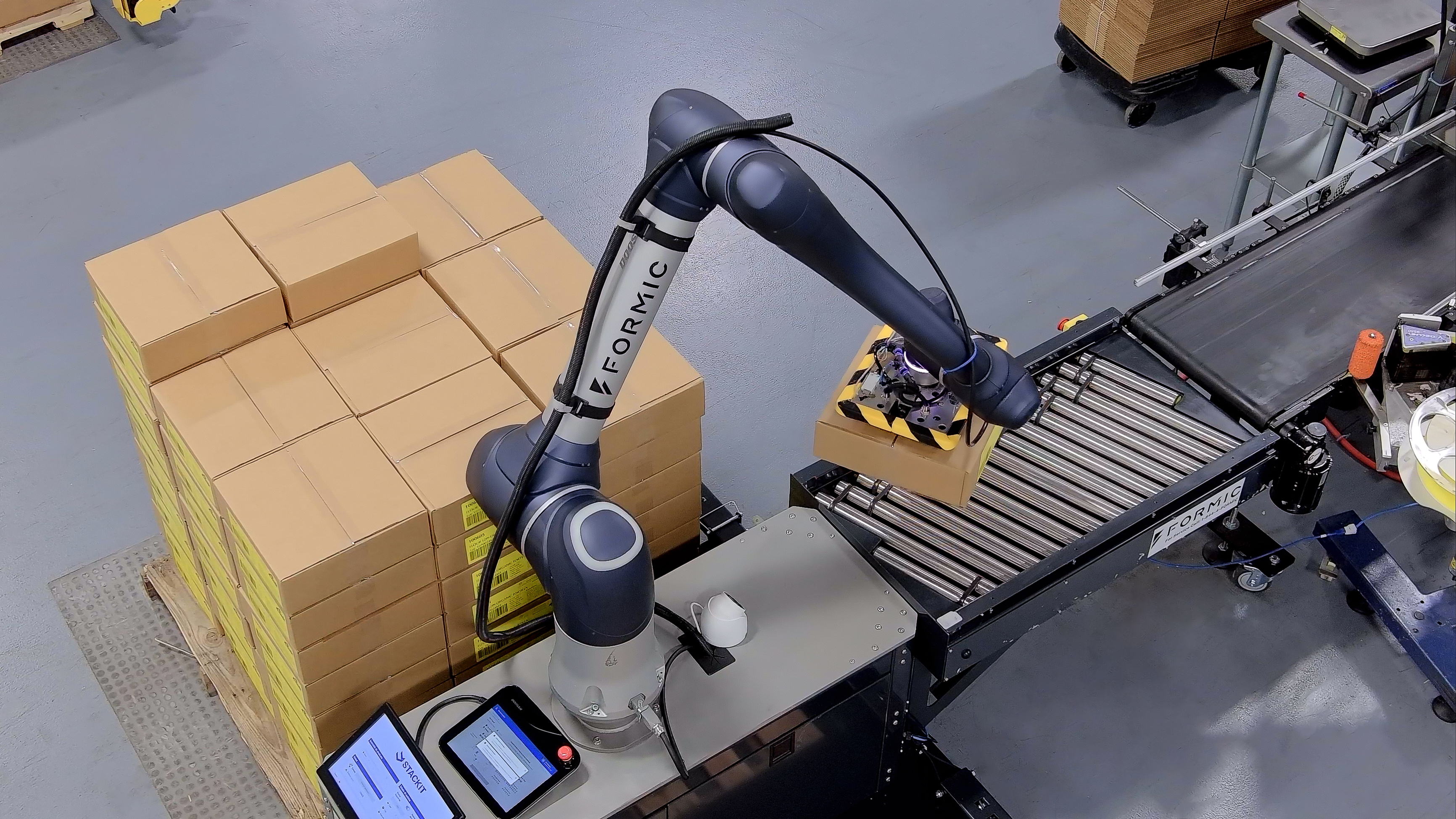Which Is Right For Your Production Line?
In today's competitive manufacturing environment, streamlining processes and maximizing efficiency are top priorities. Many manufacturers are now looking to automation as the answer to these challenges. While robotics and other technologies may be utilized throughout a facility, the end-of-line processes, such as palletizing, are a great area to start.
However, the amount of available options also make palletizing automation selection a bit of an overwhelming task. Palletizers can range from relatively standard to extremely custom depending on the application requirements. No matter where you wind up, the necessary first step is to determine which palletizer type you can implement: cobot or industrial.
Today, we’ll detail and compare the key differences between cobot and industrial palletizers, along with several application examples to give you a better idea of how each method is helping various manufacturers. Our goal is to help you better understand the differences so you can be on your way to implementing the ideal automation solution for your production line.
Cobots: Agile and User-Friendly
Cobots, short for collaborative robots, are designed to work safely alongside humans. They are both user-friendly and agile, allowing them to be up and running quickly. They also tend to cost less on avergae than an industrial cell. Let’s take a look at their general specifications:
- Payload – usually less than 30 lbs. Cobots are designed to handle lightweight to medium-weight products such as electronics, beverages, or packaged food.
- Box Dimensions - cobots can handle a wide range of box sizes, typically within a range of 6"x6"x6" up to 24"x 24"x24".
- Double Picking - some cobot palletizers can pick two boxes simultaneously for increased speed.
- Speed - cycle times usually run around 6 cases/ minute or less, making them best suited for low-to-medium cycle volumes.
- Stack Heights - cobots typically handle stack heights up to 72” inches.
- Safety - cobots operate at lower speeds, making them relatively safe to run. They rely on safety light curtains or sensors to detect human presence and stop operation if necessary.
- Footprint - cobots don’t take up too much valuable floor space - typically around 8'x8'x10’.

Typical Cobot Palletizer Applications
Cobot palletizers excel in industries that produce smaller payloads and lower cycle volume. They are commonly found in food and beverage plants palletizing packaged goods ranging from snacks and baked goods to canned and bottled drinks. The medical industry relies on them to handle pharmaceuticals and medical supplies. Smaller and lighter consumer goods are handled by cobots as well, including anything from toys to delicate electronics.
Industrial Palletizers: Powerful and Fast
Industrial palletizers are highly capable, heavy-duty systems designed to handle high speed and high-volume requirements. They can be heavily customized to accommodate a higher range of cell configurations, making them highly versatile as well. Let’s take a look at their key specs:
- Payload - typically up to 60 lbs, making them suitable for palletizing larger and heavier containers.
- Box Dimensions - similar to cobots with expanded range to accommodate heavier or bulkier items.
- Double Picking - many industrial palletizers offer double picking capabilities for increased productivity.
- Speed - expect cycle times of 12 cases/minute or faster, significantly higher than cobots.
- Stack Heights - industrial palletizers can handle taller stacks, often reaching up to 100 inches.
- Safety - due to their higher speeds and payload capacities, industrial palletizers require hard guarding to ensure worker safety.
Footprint - larger than a cobot, typically 10'x10'x10' high, due to extensive safety guarding.

Industrial Palletizer Applications
Industrial palletizers are designed for more demanding applications that require moving heavy payloads quickly. They are found in the automotive industry, palletizing heavy car parts and components. The construction industry relies on them to palletize bricks, blocks and other heavy building materials. For the beverage industry, while cobots handle smaller loads, industrial palletizers take care of cases and kegs with ease.
Conclusion: Choosing the Perfect Palletizer
Both cobot palletizers and industrial palletizers deliver measurable automation benefits. Selecting the right one for your production line depends on your specific requirements. Ultimately, it will come down to weight, size, production volume, and to some extent, floor-space. And let’s not forget the big one: budget. Industrial palletizers are more capable and therefore more expensive, while cobots tend to be more affordable and attainable, as long as they can handle your application.
Either way, end-of-line automation offers a relatively easy introduction to robotics, freeing up valuable labor resources for more complex and valuable tasks.


